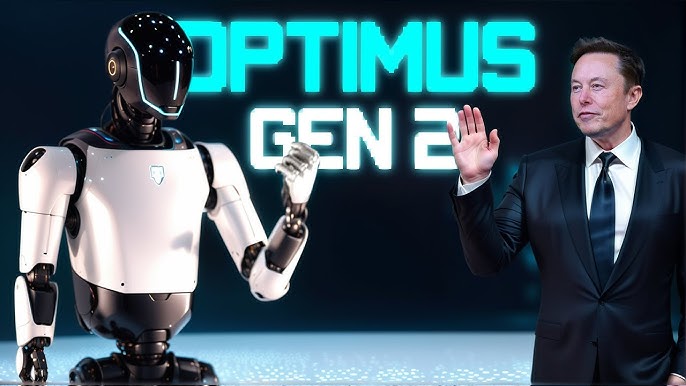Tesla has been at the forefront of AI and robotics innovation, and in 2025, the company unveiled the latest version of its humanoid robot—Tesla Optimus Gen 3. Designed to assist with everyday tasks, this robot represents Elon Musk’s vision of a future where AI-powered robots work alongside humans in homes, offices, and factories.
But what exactly can Tesla’s new AI robot do, and how close are we to having one in our homes? Let’s break it down.

Tesla Optimus Gen 3 – Key Features
The Tesla AI robot (also known as Optimus) has seen significant improvements in its 2025 update:
- Smarter AI brain powered by Tesla’s Dojo supercomputer.
- Lightweight, humanoid design with improved balance and agility.
- Enhanced hand dexterity – can handle delicate objects like eggs or electronics.
- Voice & gesture recognition – understands natural commands.
- Battery life of up to 10 hours on a single charge.
- Cloud updates – learns continuously from real-world use.
What Can Tesla’s Robot Do in 2025?
Tesla’s AI robot isn’t just a futuristic idea anymore—it’s already capable of:
🏠 Household Assistance
- Carrying groceries.
- Cooking simple meals.
- Cleaning and tidying spaces.
- Helping elderly or disabled individuals with daily tasks.
🏢 Workplace Support
- Transporting packages in warehouses.
- Assisting with repetitive office tasks.
- Acting as a front-desk assistant with AI communication skills.
⚙️ Industrial Use
- Working safely alongside humans in factories.
- Performing dangerous or repetitive tasks.
- Reducing labor costs for companies.
Price & Availability
While Tesla hasn’t announced an official consumer release date, experts predict:
- Initial price range: Around $20,000–$25,000.
- Release timeline: Limited rollout by late 2025, wider availability by 2026.
- Early models will likely focus on business and industrial use before home adoption.
Benefits of Tesla’s AI Robot
- Reduces repetitive workload for humans.
- Improves safety in dangerous environments.
- Increases productivity at home and work.
- Acts as a real-world test case for human-robot interaction.
Concerns & Challenges
- Job displacement fears in certain industries.
- Ethical concerns about AI autonomy.
- High cost may limit access for average households.
- Data privacy risks if always connected to the cloud.
Expert Predictions
AI experts believe Tesla’s robot will start in industrial applications before becoming a common household assistant by 2030. Some even compare it to the early days of personal computers—expensive at first, but eventually essential.
Final Thoughts
Tesla’s latest AI robot is more than just a sci-fi dream—it’s a real step toward a future where humans and robots work side by side. While it may not replace humans anytime soon, its potential in homes, offices, and factories is enormous.
Just like electric cars, Tesla may once again transform an entire industry—this time with humanoid robotics.
FAQs
1. What is Tesla’s robot called?
Tesla’s AI robot is officially named Optimus.
2. Can Tesla’s robot cook and clean?
Yes, the 2025 version can perform basic household tasks like cooking simple meals and tidying.
3. How much will Tesla’s robot cost?
Predictions suggest between $20,000–$25,000 at launch.
4. When will it be available?
A limited release may happen in late 2025, with wider rollout in 2026.
5. Will Tesla’s robot replace human jobs?
It may reduce repetitive roles, but it’s designed to assist, not fully replace humans.
READ ALSO: Top 5 Laptops for Remote Work in 2025